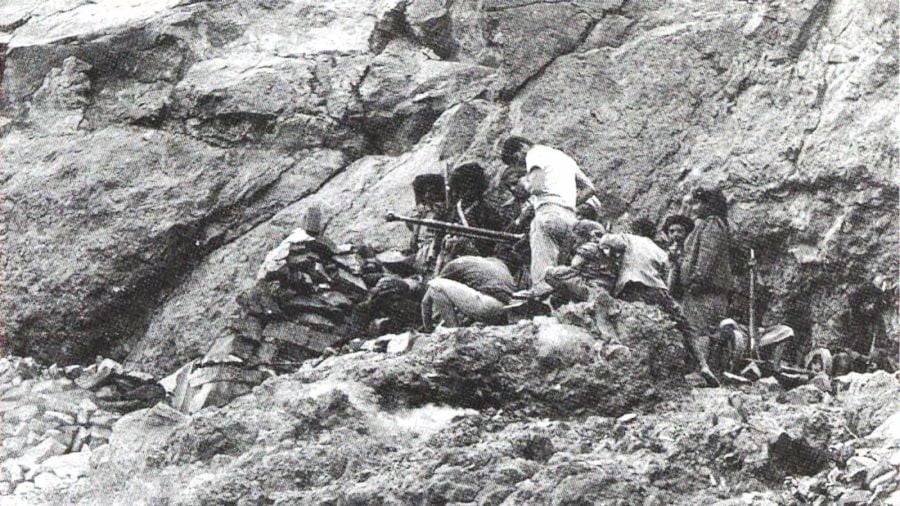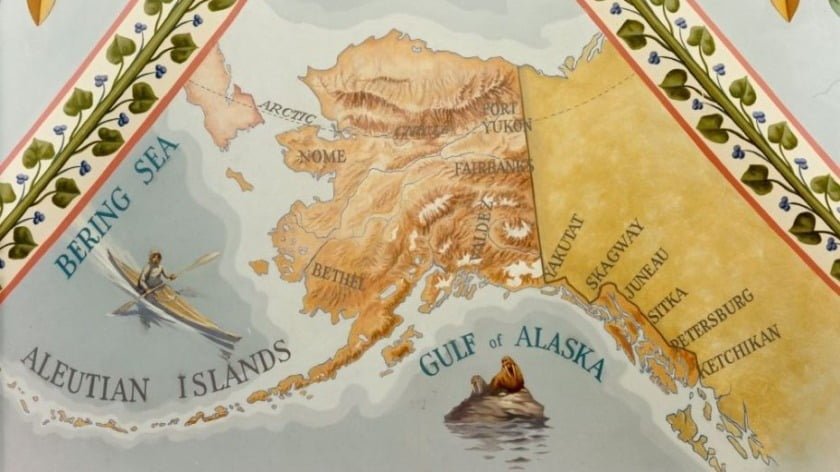Britain’s Covert War in Yemen
The brutal war in Yemen, which has raged since 2015, is the world’s worst humanitarian disaster. A delicate truce since April has reduced some of the horror, but that deal seems to be breaking down.
It should be time to reflect about who, on all sides of the conflict, including in Britain, might be indicted for war crimes. Nearly 9,000 civilians have been killed in over 25,000 mainly Saudi air strikes which have been facilitated by Britain’s Royal Air Force. Many more tens of thousands have been killed in the conflict.
The U.N. has repeatedly alleged the commission of war crimes but no Saudi, Briton or Yemeni has been held to account, nor is likely to be. Tragically, it is history repeating itself, and the price once again is being paid by ordinary Yemenis.
Sixty years ago, in September 1962, the king and imam of North Yemen, Muhammad al-Badr, was overthrown in a popular coup. Al-Badr had been in power for only a week having succeeded his father’s regime, a feudal kingdom where 80 percent of the population lived as peasants and which was controlled through bribery, a coercive tax system and a policy of divide-and-rule.
The coup was led by Colonel Abdullah al-Sallal, an Arab nationalist within the Yemeni military, who proclaimed the Yemen Arab Republic and who instituted close links to Egypt’s government under President Gamal Abdel Nasser.
Nasser, the de facto leader of nationalist forces in the region, was the U.K.’s main enemy, promoting an independent foreign policy and who Britain had failed to destroy in its unsuccessful invasion of Egypt’s Suez Canal in 1956.
Royalist forces supporting al-Badr took to the hills and began an insurgency, soon to be backed by Saudi Arabia, against the new republican regime, while Nasser deployed Egyptian troops in North Yemen to shore up the new government.
Britain chose, as in the present war, to ally with the Saudis to overthrow the new government and restore a pro-Western regime.
Ironically, the Yemeni royalists they supported were drawn from the Zaydi Shia religious group — whose present-day spiritual followers now mostly congregate around the Houthi rebel movement, which Britain and Saudi Arabia now seek to destroy.
‘Shifty, Unreliable & Treacherous’

The declassified files are fascinating in showing that British officials were aware they were supporting the “wrong” side.
Christopher Gandy, Britain’s top official in North Yemen, noted shortly after the coup that the rule of the previous imam was “unpopular with large elements” and that his “monopoly of power” was “much resented.”
This was exploited by the new republican government which soon appointed into office people from “classes, regions and sects previously neglected in the distribution of power.”
Gandy wrote that in contrast to the imam’s “arbitrary autocracy,” the republicans were “much more open to contact and reasoned argument.”
Thus he recommended that the U.K. recognise the new Yemeni government, saying it was interested in friendly relations with Britain and that this was “the best way to prevent an increase” in Egyptian influence.
Gandy was, however, overruled both by his political masters in London and by officials in neighbouring Aden. This was Britain’s then colony that was surrounded by a British “protectorate” known as the Federation of South Arabia (later to become South Yemen).
The federation was a set of feudal fiefdoms presided over by autocratic leaders similar to al-Badr who had just been overthrown in Yemen, and kept sweet by British bribes.
An official in Prime Minister Harold Macmillan’s office noted that Nasser had been “able to capture most of the dynamic and modern forces in the area while we have been left, by our own choice, backing the forces which are not merely reactionary (that would not matter so much) but shifty, unreliable and treacherous.”.
Macmillan himself admitted that it was “repugnant to political equity and prudence alike that we should so often appear to be supporting out-of-date and despotic regimes and to be opposing the growth of modern and more democratic forms of government.”
Threat of a Good Example
The big issue for Whitehall was retaining the U.K.’s military base at the port city of Aden. This was the cornerstone of British military policy in the Gulf region, in which the U.K. was then the major power, directly controlling the sheikhdoms of the Gulf and with huge oil interests in Kuwait and elsewhere.
It was feared that a progressive, republican, Arab nationalist North Yemen would serve as an example to the feudal sheikhdoms throughout the Gulf and the wider Middle East as well as in Aden itself.

Foreign Secretary Alec Douglas-Home stated shortly after the republican coup that Aden could not be secure from “a firmly established republican regime in Yemen.”
A ministerial meeting similarly concluded that if Britain were forced out of Aden it would be “a devastating blow to our prestige and authority” in the region.
Even to recognise the new Yemeni government might lead to “a collapse in the morale of the pro-British rulers of the protectorate,” putting “the whole British position in the area… in jeopardy.”
These concerns were shared by the medieval kingdom in the region, Saudi Arabia, which, then as now, feared the overthrow of monarchies by nationalist forces. British planners recognised the Saudis “were not greatly concerned about the form of government to be established in the Yemen, provided that it was not under the control of” Egypt – any other government would do.
This threat heightened as Nasser and al-Sallal gave diplomatic and material support to anti-British republican forces in Aden and the federation and conducted a public campaign urging the British to withdraw from their imperial possessions.
Sir Kennedy Trevaskis, Britain’s high commissioner in Aden, noted that if the Yemenis were to secure control of Aden “it would for the first time provide the Yemen with a large modern town and a port of international consequence”.
Most importantly, “economically, it would offer the greatest advantages to so poor and ill developed a country” – a consideration, though, which was an irrelevance in British planning.
‘A Weak Government in Yemen’
British officials decided to engage in a covert campaign to promote forces they recognised as “treacherous” and “despotic” to undermine those recognised as “popular” and “more democratic” in order to ensure that the threat of the latter did not spread.
Crucially, they did so in the knowledge that their clients stood little chance of winning. The campaign was undertaken simply to cause trouble for the republicans and the Egyptians, while they held the majority of the country and the centres of population.

Harold Macmillan noted in February 1963 that “in the longer term a republican victory was inevitable.” He told U.S. President John Kennedy that:
“I quite realise that the Loyalists [sic] will probably not win in Yemen in the end but it would not suit us too badly if the new Yemeni regime were occupied with their own internal affairs during the next few years.”
What Britain wanted, therefore, was “a weak government in Yemen not able to make trouble,” he wrote.

A note to Macmillan from one of his officials similarly stated:
“All departments appear to be agreed that the present stalemate in the Yemen, with the republicans and royalists fighting each other and therefore having no time or energy left over to make trouble for us in Aden, suits our own interests very well.”
The Covert Campaign
Piecing together a chronology of British covert action is difficult in light of the censorship of the British files. But the task is aided by MI6 expert Stephen Dorril’s analysis in his comprehensive book on MI6, produced mainly from secondary sources and interviews. There have been two other notable books, by Clive Jones and Duff Hart-Davis.

Shortly after the September 1962 coup Jordan’s King Hussein visited London where he met air minister Julian Amery and urged the Macmillan government not to recognise the new Yemeni regime. They both agreed that MI6 asset Neil “Billy” McLean, a serving Conservative MP, tour the area and report back to the prime minister.
Dorril notes that MI6’s former vice chief, George Young, then a banker with Kleinwort Benson, was approached by the Israel secret service, Mossad, to find a Briton acceptable to the Saudis to run a guerrilla war against the republicans. Young then introduced McLean to Dan Hiram, the Israeli defence attaché who promised to supply arms, money and training, which the Saudis eagerly grasped.
In October McLean visited Saudi Arabia as a personal guest of King Saud, who called on Britain to provide aid to the royalists, especially “air support… if possible openly, but if this is not possible, then clandestinely.”
By early November, Saudi arms and money were flowing to the royalists and in the same month the Foreign Office produced a policy paper outlining the options open to the government, including covert aid.
On Jan. 7, 1963, the cabinet’s Overseas and Defence Committee advocated not to recognise the new regime in Yemen and that if Britain were to provide aid to the royalists it should be at arm’s length rather than direct.
The following month positions in the Federation of South Arabia were attacked by Yemeni tribesmen and Egyptian troops began an offensive into the royalist-held mountains in Yemen. Macmillan appointed Julian Amery his minister for Aden with a remit to covertly organise British support for the royalists, working from his office at the Ministry of Aviation.
Arms Supplies

McLean visited Yemen for a third time on March 1, 1963. Shortly afterwards a royalist delegation visited Israel, following which unmarked Israeli planes made flights from Djibouti to drop arms over royalist areas.
By early March, the files confirm that Britain was already involved in supplying arms to the royalists, via Sherif bin Hussein, the tribal leader in Beihan in the federation.
According to Dorril, several million pounds worth of light weapons, including 50,000 rifles, were secretly flown out from an RAF base in Wiltshire. To mask their origin, they were landed in Jordan for onward transportation. By the end of the month, the royalists had regained some of their lost territory.
At a meeting in late April 1963 — involving MI6 chief Dick White, McLean, SAS founder David Stirling, ex-SAS officer Brian Franks, Douglas-Home and Amery – Stirling and Franks were told there could be no official SAS involvement and were asked to recommend someone who could organise a mercenary operation.
Dorril notes they approached Jim Johnson, a recently retired SAS commander, and Lt Col John Woodhouse, commander of 22 SAS. McLean, Johnson and Stirling were introduced by Amery to the royalist foreign minister, Ahmed al-Shami, who wrote out a cheque for the operation for £5,000.
The proposed Yemen plan was the subject of fierce debate in Whitehall but the prime minister was eventually persuaded to support it and instructed MI6 to aid the royalists. An MI6 task force was set up which coordinated the supply of weapons and personnel. This was organised by John da Silva, formerly head of MI6’s station in Bahrain.
In October Macmillan resigned to be replaced by Douglas-Home as prime minister, which temporarily put plans on hold since the new foreign secretary, Rab Butler, opposed covertly supporting the royalists.
Operation Rancour
By early 1964, SAS officer Jonny Cooper was engaged in intelligence activities against Egyptian forces as his team trained the royalist army. In February Cooper’s team manned drop zones into which arms and ammunition were parachuted, with the discreet backing of MI6 and the C.I.A.
Defence Secretary Peter Thorneycroft called in private for Britain to organise “tribal revolts” in the frontier areas. This should involve “deniable action… to sabotage intelligence centres and kill personnel engaged in anti-British activities,” including the Egyptian intelligence HQ at Taiz, and “covert anti-Egyptian propaganda activities in the Yemen.”
He also argued for “further assistance” to the royalists including “either money, or arms or both.”
By April 1964 the British had already authorised mine-laying (called Operation Eggshell), the issuing of arms and ammunition to tribesmen in the frontier area (Operation Stirrup) and sabotage in the frontier area (Operation Bangle).

Acts of “subversion in Yemeni territory against individual targets” were being carried out “under the control of British officers within the federation,” according to a Ministry of Defence memo. These officers “can hand out arms and money in instalments according to the local situation and in proportion to the successes achieved.”
Operation Rancour was the codeword given to “current covert operations to exploit [sic] dissident tribes up to 20 miles into Yemen to neutralise Egyptian subversive action against Aden.”
Assassination
An extraordinary top-secret document in the government files went even further in considering the options open to Britain.
It was entitled “Yemen: The range of possible courses of action open to us” and considered “assassination or other action against key personnel” involved in subversion in the federation, “especially Egyptian Intelligence Service officers.”
It also outlined “action to stimulate a guerrilla campaign” in the frontier area by supplying arms and money and “non-retaliatory sabotage” including in Sana’a, the main city in North Yemen.
It suggested “closing our eyes” to Saudi arms supplies to the royalists and undertaking “’black’ pamphleteering” in republican-controlled areas of Yemen and “’black’ radio broadcasts” from the federation.
As these options were being debated in private, on May 14, 1964, Prime Minister Douglas-Home lied to parliament that:
“Our policy towards the Yemen is one of non-intervention in the affairs of that country. It is not therefore our policy to supply arms to the royalists in the Yemen.”
At the end of July ministers took the decision to promote “further measures” to support the royalists, meaning to “give all necessary facilities” to the Saudis to secure arms from Britain.
Britain’s ambassador to Saudi Arabia, Colin Crowe, then met Crown Prince Feisal and told him of the U.K.’s willingness to provide arms to the Saudis for use in Yemen but said London could not provide overt aid directly to the royalists.
Then as now, Whitehall was working with the Saudis as their proxies to fight a regional war.
Full Support

Dorril notes that Dick White, the head of MI6, won over new Prime Minister Douglas-Home to supporting a “clandestine mercenary operation” and the go-ahead for fuller support for the royalists was sanctioned in the summer of 1964.
Some 48 ex-servicemen were employed as mercenaries that year, including a dozen former SAS men. MI6 officers provided intelligence and logistical support, while GCHQ pinpointed the location of republican units.
MI6 operatives also coordinated the crossing of tribesmen over the border from the federation into Yemen where they tracked Egyptian army officers.
In what turned out to be a dirty war, MI6 officers “manipulated” the tribesmen and helped “direct the planting of bombs” at Egyptian military outposts along the frontier, while garrison towns were “shot up” and political figures “murdered,” Dorril notes.
One letter contained in the government files was written in August 1964 by a mercenary, Colonel Michael Webb, who says he recently retired from the army, to Julian Amery. Webb said he had been fighting with the imam’s forces for the past few weeks and his cover was as a freelance journalist.
He had kept the British embassy “fully informed of my movements and given them all the information I have obtained.”
The following month a note to the prime minister recommended the supply of bazookas and ammunition to the Sherif of Beihan “for use by a dissident group in Taiz,” ie Yemen.
At the same time, Stirling met royalist foreign minister, al-Shami, in Aden where they were joined by an MI6 officer and drew up plans for establishing a regular supply of arms and ammunition to the royalist forces.
Labour Government

In October 1964, the election of Harold Wilson’s Labour government does not seem to have noticeably upset the covert operation. Dorril notes the RAF undertook secret bombing in retaliation for Egyptian attacks on camel trains supplying weapons to French and British mercenaries.
As part of an arms deal with Saudi Arabia, Britain agreed a contract worth £26m with a private company, Airwork, to provide personnel for the training of Saudi pilots and ground crew. Airwork also recruited former RAF pilots as mercenaries to fly operational missions against Egyptian and republican targets along the Yemeni border.
By 1965 MI6 was chartering aircraft with discreet pilots and had obtained the agreement of Israel to use its territory for mounting operations. These operations continued into 1967, according to the files.
A Foreign Office note of March 1967 states that the British pilots were recruited by Airwork to fly five Lightnings and five Hunters already supplied by Britain. It said:
“We have raised no objection to their being employed in operations, though we made it clear to the Saudis that we could not publicly acquiesce in any such arrangements.”
Following a ceasefire declared in August 1965 the British-backed mercenaries reverted to supplying medical aid and maintaining communications. By late 1966 the war had restarted and the fighting had reached a stalemate but the British were still running an extensive mercenary operation in Yemen.
War’s End

After Egypt’s defeat by Israel in the 1967 war, Nasser decided to pull his troops out of Yemen, and in November Britain was forced to withdraw from Aden. Yet files from March 1967 refer to ongoing “covert operations in South Arabia” and to “Rancour II operations.”
A June 1967 paper observed that “Rancour operations in the Yemen have been extremely successful in driving the Egyptians back from parts of the frontier and tying them down.”
Despite the Egyptian withdrawal the civil war in Yemen continued. In 1969, two mercenaries from another private firm, Watchguard, were killed while leading a band of royalist guerrillas in the North.
In March 1969 the Saudis cut off their supplies to the royalists, following which a treaty was signed ending hostilities with the country reborn as North Yemen.
Al-Badr had by now fled to England where he stayed until dying in 1996.
The number of those who died in Yemen throughout the 1960s was never accurately established, but may have been as many as 200,000.
Colonel Jim Johnson, who led the British mercenaries in Yemen, was later made aide-de-camp to Queen Elizabeth. He then set up another mercenary company, Keenie Meenie Services, which fought in Nicaragua and Sri Lanka. Its activities in Sri Lanka are currently under investigation by the Metropolitan Police war crimes team.







